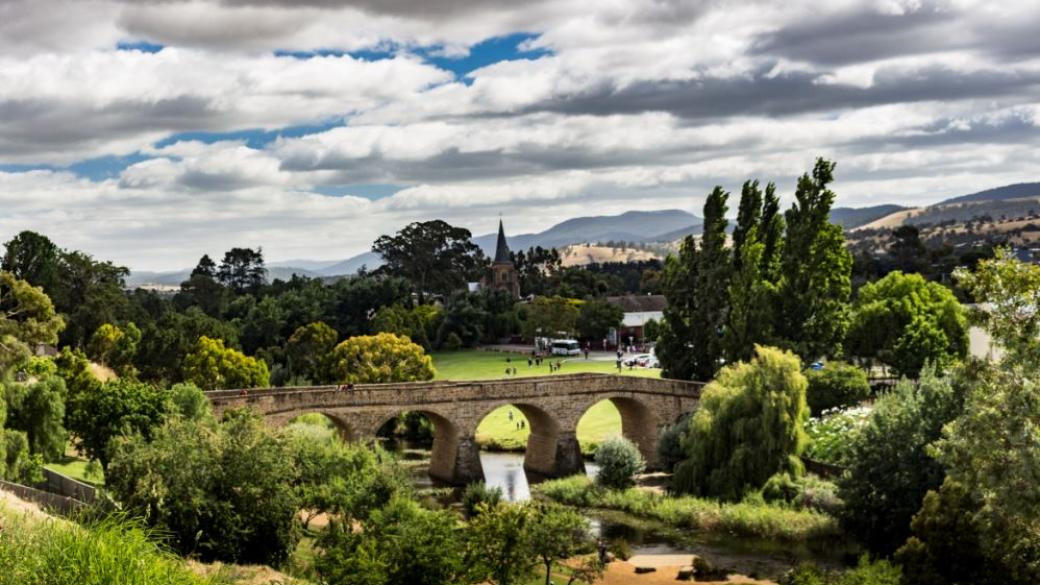Richmond -Tasmania’s Time Capsule
The town has almost entirely preserved its colonial look and feel

© ECONOMIC.BG / Wikipedia
Lying about 25 km north-east of the capital city of Hobart, the Tasmanian town of Richmond offers a trip back in time to an early Australian colonial village. With over 50 historic beautifully restored Georgian buildings from the 1820s and a population of 880 people, Richmond is a vibrant place with a lot of things to see and do and a variety of fabulous wines and food to taste.
The area of today’s Richmond was originally inhabited by the Moomairremener people, and was explored by surveyor James Meehan, who found coal in the region and called the nearby river Coal River. After 1808 when land grants started being awarded, the town grew, sheep farming and agriculture flourished and Richmond became Tasmania's major wheat-producing region. Access to the east coast of Coal River was improved by the construction of a bridge in 1823 and the settlement grew up around it. Richmond became a town in 1824 and hosted inns, general stores, a market place, blacksmiths, saddlers, tanneries, brick and lime kilns and a windmill. A year later it became one of the nine districts of Lt-Governor Arthur's police system with a courthouse, barracks, a watch house and a jail, which housed British convicts.
The population decreased during the gold rushes and after the town stopped serving as a penal colony. In 1861 it became a municipality and for the next 100 years, remained a quiet rural community. The lack of progress turned beneficial as Richmond preserved its colonial look and feel and when tourism started developing in the 1960s, the significance of its heritage, together with the growth in arts and crafts, made it one of Tasmania's major tourist destinations.
Learning about Tasmania’s past here is as easy as a stroll down the splendid 19th century streets. Probably the most famous and photographed landmark is the Richmond Bridge – the oldest stone span bridge in Australia still in use. The bridge was built by convicts with sandstone in 1823 and apart from serving vehicles and pedestrians, it attracts visitors and locals who make picnics beside it, take photos, feed the ducks and enjoy the serenity of Richmond life.
A short walk up from the Richmond Bridge will take you to St. John the Evangelist Church – Australia’s oldest Roman Catholic Church, built in 1836. In fact, St. Mary’s Cathedral in Sydney was built earlier, but in 1865 its original chapel was destroyed by fire and therefore St. John is considered the oldest still-functioning original church. The beautifully maintained building and its surrounding garden are well-worth the visit.
Richmond is home to yet another of Australia’s oldest landmarks - The Richmond Gaol – the oldest intact jail in the country, which was built in 1825 and was in use until 1928. Today it is open for visitors, who can get an insight into the 19th c. convict life and learn about some of its notorious prisoners. The story has it that one of them – “Ikey” Solomon - was the model for the character of Fagin in Charles Dickens’ novel Oliver Twist.
If you wish to get a glimpse of what colonial life in Richmond looked like, you should visit the Oak Lodge museum – one of Richmond’s oldest Georgian houses, pretty much preserved in its original condition and the only historic home open to the public in Richmond. Visitors can actually handle most of the exhibits while walking through the hallway adorned with beautiful 1840s Gothic wallpaper, Dr Clark’s consulting rooms, the school room, the cobblestone yard and the heritage garden.
Another must-see attraction in Richmond is the Old Hobart Town - Tasmania's original and Australia's only historical model village built from original plans and covering an area approximately the size of two tennis courts. Located in the heart of Richmond, it replicates in miniature the life and history of Hobart in the 1820s and consists of over 60 replica model buildings, 600 period figurines, as well as over 100 bonsai trees.
Despite of its small size, Richmond boasts a whole lot of art galleries and craft shops that are worth the time to explore. A stroll down the central streets will give you the opportunity to see and buy lovely handmade Tasmanian art, jewellery, woodcraft, textiles, soaps, souvenirs, antiques and clothing.
If you are an animal lover, you should take the time to visit the Zoodoo Zoo, located 10 minutes outside Richmond. The zoo features a great number of native animals, such as Tasmanian Devils, but also camels, lions, tigers, meerkats, monkeys and zebras. It offers unique safari bus tours which take visitors to hand-feed large animals including lions, ostriches, camels or zebras and allows them to pat a reptile and see Tasmanian Devils being fed.
One thing that Richmond has in abundance is delicious food and you should definitely try out some of their fantastic cafes, restaurants, farms and produce shops. A visit to Richmond will not be complete without a stop at “Sweets and Treats”, a traditional-style lolly shop located on the main street, where you’ll find tens of different old style lollies, displayed in glass jars, Tasmanian fudges, premium ice-creams and coffee.
Richmond is situated in the heart of one of Australia's fastest-growing wine regions, the Coal River Valley, making it a great destination for wine lovers. There are a number of vineyards and wineries, offering wine tasting tours and fine outside restaurants with great views over the valley and the river. If you wish to combine the fabulous local wines with some superb locally produced cheese, you should visit the boutique cheese maker Wicked Cheese Co., and try their extensive range, especially the award-winning - Triple Cream Brie.
For more authentic Tasmanian handmade and homegrown products, unlikely to find anywhere else in one place, you should visit the Richmond Farmers and Makers Market held every Saturday. The market features home-grown produce from the Coal River region, as well as local crafts, jewellery, plants etc. direct from the producers, artists or the farmers.















